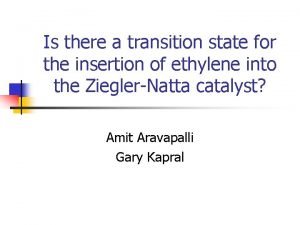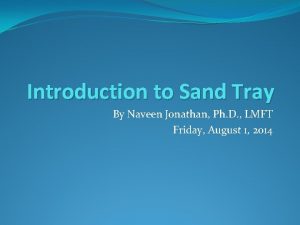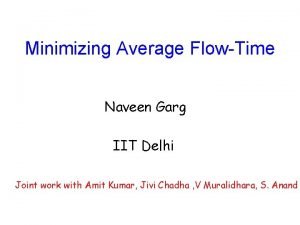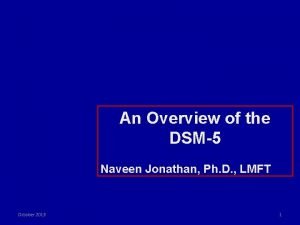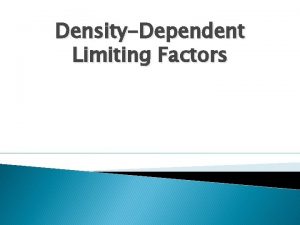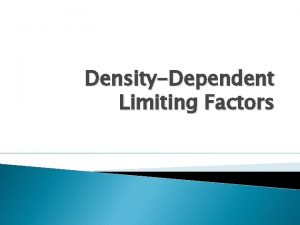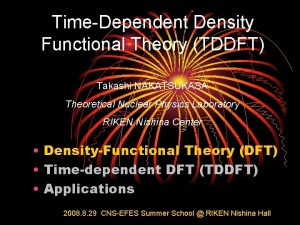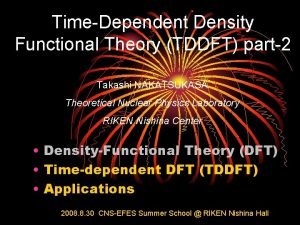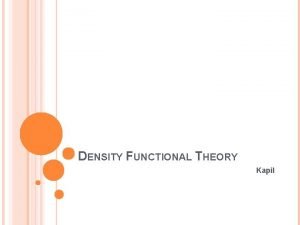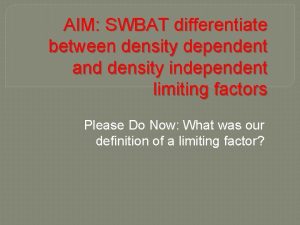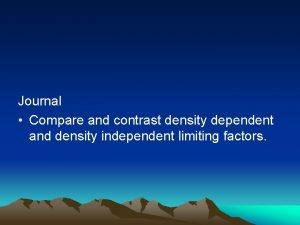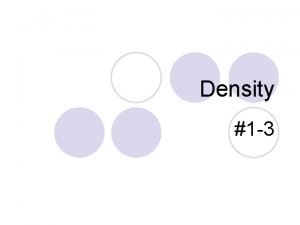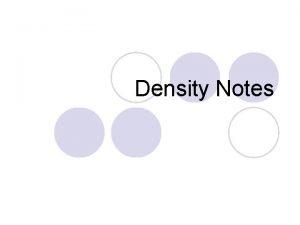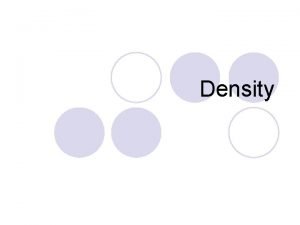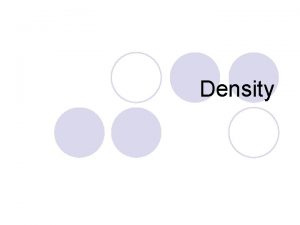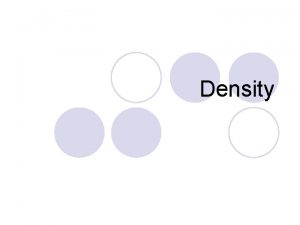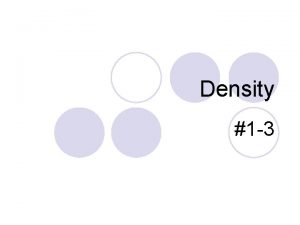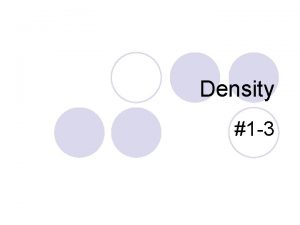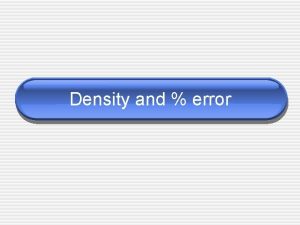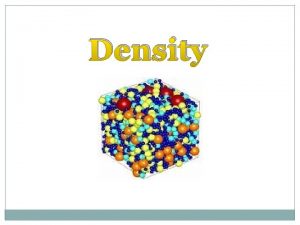Time Dependent Density Functional Theory TDDFT Naveen Dandu






















- Slides: 22

Time Dependent Density Functional Theory (TDDFT) Naveen Dandu and Brendan Gifford Dr. Kilina’s Group Theory Talk Naveen Dandu & Brendan Gifford June 14, 2021 1

Content Outline • Previously on theory talks – HF – DFT – Self interaction – Functionals – Basis Sets – Numerical integration in DFT • TDDFT Naveen Dandu & Brendan Gifford June 14, 2021 2

What does DFT provide? • Atomic structure – Lattice parameters • • Total energy Electronic density Dipole moments Frequencies (IR, Raman) Naveen Dandu & Brendan Gifford June 14, 2021 Ground state properties 3

What DFT cannot provide? • Electronic structure • Optical properties Naveen Dandu & Brendan Gifford June 14, 2021 4

Why we need ab-initio studies? • To understand explain the observed phenomena • To offer a reference spectra to experimentalists • To predict properties before the synthesis Naveen Dandu & Brendan Gifford June 14, 2021 5

What is TDDFT? • DFT with time-dependent external potential is TDDFT Hohenberg-Kohn theorem Runge-Gross theorem Naveen Dandu & Brendan Gifford June 14, 2021 Stationary orbitals and density Time-dependent orbitals and density 6

Runge-Gross Theorem (1984) Naveen Dandu & Brendan Gifford June 14, 2021 7

Preliminaries • Time dependent Schrödinger equation kinetic energy operator: electron interaction: The TDSE describes the time evolution of a many-body state starting from an initial state under the influence of an external time-dependent potential Naveen Dandu & Brendan Gifford June 14, 2021 8

Runge-Gross Theorem • For a fixed initial state and given an analytic time dependent potential, the mapping to the time dependent probability density is injective. That is, for the same initial state, two different external potentials can not give the same probability density function ρ(r, t). Naveen Dandu & Brendan Gifford June 14, 2021 9

Runge-Gross Theorem Proof Consider two systems of N interacting electrons, both starting in the same Y 0 , but evolving under different potentials vext(r, t) and vext’(r, t) respectively: vext(t), Y(t) Yo Assume time-analytic potentials: vext’(t), Y’(t) RG prove that the resulting densities n(r, t) and n’(r, t) eventually must differ, i. e. same Naveen Dandu & Brendan Gifford June 14, 2021 10

Runge-Gross Theorem Proof The first part of the proof shows that the current-densities must differ. Consider Heisenberg e. o. m for the current-density in each system, the part of H that differs in the two systems ; t ) At the initial time: initial density if initially the 2 potentials differ, then j and j’ differ infinitesimally later ☺ Naveen Dandu & Brendan Gifford June 14, 2021 11

Runge-Gross Theorem Proof If vext(r, 0) = v’ext(r, 0), then look at later times by repeatedly using Heisenberg e. o. m : … * As vext(r, t) – v’ext(r, t) = c(t), and assuming potentials are time-analytic at t=0, there must be some k for which RHS = 0 proves j(r, t) 1 -1 Yo vext(r, t) ü 1 st part of RG ☺ The second part of RG proves 1 -1 between densities and potentials: Take divergence of both sides of * and use the eqn of continuity, … Naveen Dandu & Brendan Gifford June 14, 2021 12

Runge-Gross Theorem Proof … ≡ u(r) is nonzero for some k, but must taking the div here be nonzero? Yes! Then assume fall-off of n 0 rapid enough that surface-integral 0 integrand i. e. 0, so if integral 0, then contradiction same 1 -1 mapping between time-dependent densities and potentials, for a given initial state Naveen Dandu & Brendan Gifford June 14, 2021 13

Missing anything? Naveen Dandu & Brendan Gifford June 14, 2021 14

Time-Dependent Kohn-Sham system Non-interacting Hamiltonian given by: Gives “determinantal” wave function: Which is constructed using a set of N orbitals obeying the following:

Time-dependent Kohn-Sham System • With time-dependent density: • Such that Ps(r, t) is equal to the density of the interacting system at all times: • So, if you know (or can reasonably approximate) Vs(r, t), you know everything!

Time-dependent Kohn-Sham System • The potential in this time dependent situation is given by: • Runge-Gross dealt with this (Naveen did details).

Linear response TDDFT • For a small time dependent external perturbation: • The linear response of the density:

Linear Response TDDFT • Within the linear-response domain, the variation of Hartree and exchange-coorelation potential to linear order:

Linear-response TDDFT • Inserting this relation into the response equation for the KS system, the response equation for physical system gives:

Questions? ? ?

Source • Some of the slides are taken from online available power points. Thanks to all of them. Naveen Dandu & Brendan Gifford June 14, 2021 22
 Density functional theory
Density functional theory Naveen jonathan
Naveen jonathan Naveen garg iit delhi
Naveen garg iit delhi Naveen college bilaspur
Naveen college bilaspur Naveen jonathan
Naveen jonathan Naveen hyder
Naveen hyder Naveen adusumilli
Naveen adusumilli Naveen garg iit delhi
Naveen garg iit delhi A population of 1492 baltimore orioles
A population of 1492 baltimore orioles Section 5-1 how populations grow answer key
Section 5-1 how populations grow answer key Whats a density dependent factor
Whats a density dependent factor What is an example of a density independent limiting factor
What is an example of a density independent limiting factor Parasitism
Parasitism Density dependent limiting factor def
Density dependent limiting factor def Limiting factor activity
Limiting factor activity Rule of 70 apes
Rule of 70 apes Section 5-2 limits to growth
Section 5-2 limits to growth Calculate specific gravity
Calculate specific gravity Planar density
Planar density Physiological density
Physiological density Linear density and planar density
Linear density and planar density Nda full dac
Nda full dac Physiological density of egypt
Physiological density of egypt
